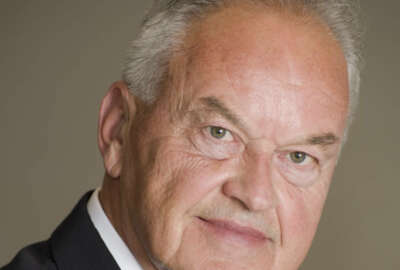Normally by mid-February, if not before, people who live in the metro Washington, D.C. area — in and outside the Beltway — are the laughing stock of the nation. And that’s not because of POTUS de jour, or the antics of politicians who folks back home send here to sometimes say or do silly, even dangerous things. That’s not the problem. The problem, normally but not so far this year, is the weather. As in ice and snow.
We have the rep as being the winter weather wimps. Our main employer — Uncle Sam — shuts downs (or so many think) at even the hint of snowflakes. If there is an ice storm, we huddle in our homes or apartments living off civil defense supplies from the days of the Cold War. Just the hint of weather, which would be considered balmy in Milwaukee or Syracuse, and we act like the end is near. Folks who grew up in the real world, where boys and girls walked 16 miles round-trip through snowdrifts, laugh at our school closings, which produce a future generation of winter wimps.
But thanks to something — climate change, North Korea’s nuke policies, Beyoncé’s twins or Adele’s sweep of the Grammies — the D.C. metro area has so far had mild winters. It’s been cold, to be sure. But no snow to speak of, despite sometimes near-hysterical warnings by some of our local TV weather teams. And during the weather respite, some of us have noticed that schools in more hardy areas — Chicago and New York City come to mind — and federal agencies have shut down. Although we are told that people in colder regions know how to drive, the nightly news shows that ice is ice and pileups on interstates happen. A lot. Ice, turns out, is slippery everywhere.
People who think the D.C. area is too quick to surrender to Old Man Winter forget our demographics and topography. We are right below the Mason-Dixon line in a vast metro area with slightly fewer people than greater Houston and slightly more than metro Philadelphia. We have mountains to the west, a very large bay (we call it the Chesapeake) to the east, then the Atlantic Ocean. Being a river city, D.C. is very, very hilly compared to places like Chicago. You notice it if you are walking, running or biking. And in a car when there is ice and snow. Even people from hardier climes seem to cave in after living here a few years.
Roughly 14 percent of all the nation’s federal workers live, work and commute in this area. A government shutdown that gets 60-70 percent of them off the road helps the rest of us get to work. The government’s emergency release policy changed dramatically on Jan. 13, 1982. That’s when an over-iced Air Florida plane took off from National Airport and seconds later crashed into the crowded 14th Street Bridge. Seventy-eight passengers and crew died in the crash. Seven cars on the bridge were hit, killing four people. The bridge was more crowded than usual that day at that hour because the government had started releasing people (starting with workers downtown) early because of ice and snow.
In the post-Air Florida years, the government — regardless of who was president — revised its D.C. weather policy. There were several hiccups, like when feds were told to come to work, then, when they got there, told to go home. Metro broke down, proving that nothing has changed. Massive hours-long traffic jams resulted. Then there was a new safety-first emphasis. Advancing the normal P.M. rush hour (by releasing employees an hour or two earlier) created its own problems. Crews were hard to round up. And people who didn’t work for the government found little or no public rush hour transportation to get them home. So early releases became few and far between.
The increasing popularity of teleworking has flipped the snow day equation. At one time “essential” workers had to come in regardless. So-called “nonessential “ workers, which was most people, could stay home. Due to political correctness, essential workers became “emergency” employees. Non-essentials were renamed “non-emergency.” But …
What happened is that people (non-emergency folk) who once could sleep late and lounge around during snow days suddenly had to work — from home — if they had teleworking agreements with their agencies. So now, even if the government is closed, there are tens of thousands of feds here (and in other cities) who continue to telework from home.
Feds in half a dozen cities in the west, midwest and northeast have been told or allowed to stay home because of harsh weather. Schools in those areas have also been closed even though the hardy forebears of those children never knew — or say they never knew — what a snow day was.
Meantime, thanks to a lucky-so-far year, we in the metro area, Weather Wimp Center, sympathize with your plight — even if you have ridiculed us in the past. So we do feel your pain. Up to a point.
Nearly Useless Factoid
By Michael O’Connell
The word “mukluk” finds its origin in the Yupik word “maklak,” the name of the bearded seal.
Source: Wikipedia
Copyright
© 2024 Federal News Network. All rights reserved. This website is not intended for users located within the European Economic Area.
